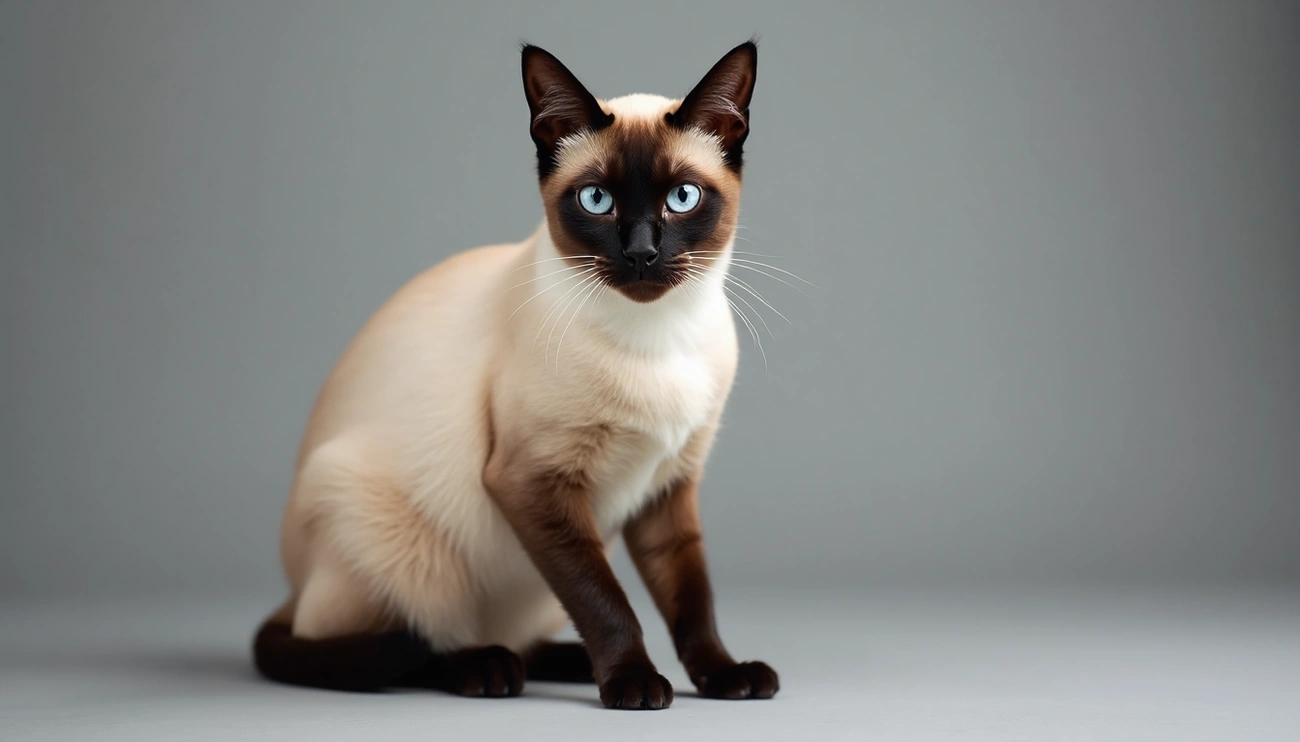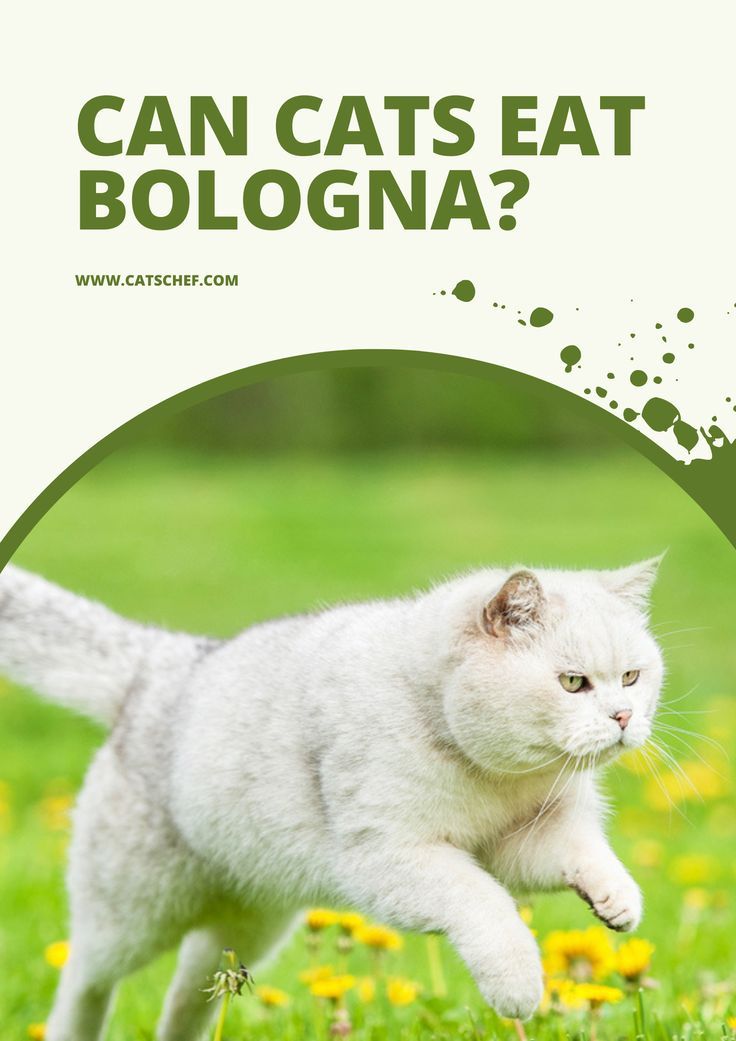The Truth About Black Siamese Cats: Do They Really Exist?
Have you ever wondered if a black Siamese cat actually exists? If you’re searching for this distinctive feline, you might be surprised by what genetics actually tells us about these elegant creatures.
In fact, while many people search for solid black Siamese cats, the reality is more complex. Siamese kittens are born completely white or cream-colored, since the temperature in their mother’s womb remains consistently warm. Unfortunately for all-black cat lovers, you won’t find truly black Siamese cats. This is because the Himalayan gene (also called the pointed gene) prevents dark Siamese from being solidly black.
What many consider “black” Siamese are actually Seal Point Siamese cats. Though they appear dark, they’re not truly solid black. Thanks to their unique genetics, a Seal Point Siamese is technically a black cat, but their coat lightens to a pale cream color over their bodies. For those seeking an elegant black cat with the characteristic Siamese personality traits, an Oriental is required instead.
In this article, we’ll explore the fascinating genetics behind Siamese coloration, examine the four official Siamese colors (Seal, Blue, Lilac, and Chocolate), and help you understand what options exist for those seeking a dark-colored cat with Siamese characteristics.
What Makes a Siamese Cat Unique?
Image Source: National Geographic
The Siamese breed’s striking appearance comes from a fascinating genetic mutation that makes them truly special among cats. Their distinctive coat pattern, with darker extremities and lighter bodies, isn’t just for show—it’s the result of complex genetics that affect how their fur develops.
The role of the Himalayan gene
At the heart of what makes Siamese cats unique is a specific mutation called the Himalayan gene, discovered in 2005. This recessive gene creates a condition known as “temperature-sensitive albinism”. Essentially, the Himalayan gene impacts tyrosinase, an enzyme crucial for melanin production—the pigment responsible for coloration in animals.
Unlike regular cats, Siamese cats have a modified version of tyrosinase that only activates at cooler temperatures below approximately 100 degrees Fahrenheit. When temperatures rise above this threshold, the enzyme becomes inactive, preventing color development.
This genetic mutation is technically a form of partial albinism. The mutated tyrosinase enzyme doesn’t work at normal body temperatures found in most of the cat’s body. However, the enzyme becomes active in cooler areas like the ears, paws, tail, and face—creating those characteristic dark “points”.
Why all Siamese kittens are born white
One of the most remarkable consequences of this temperature-sensitive gene is that Siamese kittens are born completely white or cream-colored. This occurs because they develop in their mother’s womb at a consistent temperature of about 101 degrees Fahrenheit—a cat’s normal body temperature.
During gestation, this warm environment prevents the temperature-sensitive enzyme from activating anywhere on their bodies. As a result, no melanin develops in their fur while in the womb. The consistent warmth essentially “turns off” the color-producing mechanism throughout their entire body.
You’ll notice your Siamese kitten’s white coat beginning to change when they’re about a week old. As their body temperature adjusts to the outside world, their extremities become cooler than their core body temperature. Consequently, the enzyme activates in these cooler areas, allowing melanin production to begin.
How temperature affects coat color
Following birth, the kittens’ extremities—ears, face, paws, and tail—become cooler than the rest of their body. These areas don’t retain heat as effectively as the torso, similar to how humans feel cold first in their nose, ears, fingers, and toes on a chilly day.
The color development follows a predictable pattern: between 1-2 weeks, the first subtle hints of color appear on the nose, ears, and tail. By 2-3 weeks, the points become more visible, and between 4-5 weeks, clear color definition begins. The process continues with points becoming more pronounced at 6-8 weeks, with color development continuing through the first year.
Furthermore, this temperature sensitivity persists throughout the cat’s life. If a Siamese cat undergoes surgery requiring fur to be shaved, the hair may grow back darker initially because the area is cooler during regrowth. Eventually, as normal body temperature returns, the fur typically lightens again.
Interestingly, Siamese cats living in warmer climates generally have lighter coats than those in cooler environments. Their coat colors will even darken during winter months and lighten during summer—a living thermometer of sorts that visually represents temperature changes through pigmentation.
Are There Black Siamese Cats?
Image Source: Catster
The darkest variety of the Siamese breed is the Seal Point, often mistaken for a black cat due to its deep, rich coloration. Nevertheless, there’s more to understand about these captivating felines and their distinctive appearance.
Understanding Seal Point Siamese
Seal Point Siamese cats represent the classic coloration most people associate with the Siamese breed. They display rich, dark brown points—so dark they almost appear black—contrasted against a cream-colored body. Specifically, these points appear on the ears, face, paws, and tail. At one time, Seal Point was the only accepted color for Siamese cats.
From a genetic perspective, Seal Point Siamese cats are indeed black cats. The color that manifests in their points is genetically programmed to be black. Moreover, without the Himalayan gene that defines the Siamese breed, these cats would be entirely black. This genetic reality creates an interesting paradox—they carry the black gene yet don’t display it uniformly across their bodies.
Why they appear dark but aren’t solid black
The Himalayan gene prevents Siamese cats from developing a solid coat color by creating a unique temperature-sensitive effect. Despite carrying the genetic coding for black fur, this color only develops in cooler areas of their bodies.
The points on a Seal Point Siamese appear dark brown rather than true black, albeit extremely close to black in appearance. This coloration isn’t static—their fur often darkens in winter and lightens during summer months. Additionally, if a portion of a Siamese cat’s fur is shaved, the regrowth typically appears darker initially because the skin temperature is cooler during the regrowth process.
Primarily, what makes these cats look distinctive is the contrast between their dark points and lighter body. The warmth of their torso prevents melanin production, creating that classic two-toned appearance that defines the breed.
Can a Siamese cat be black?
The straightforward answer is no—pedigree Siamese cats cannot have an all-black coat. The Himalayan gene that defines the Siamese breed makes it genetically impossible for these cats to develop solid black coloration. This gene’s temperature sensitivity restricts pigment production to the cooler extremities, resulting in the pointed pattern.
Undeniably, what makes a Siamese cat a Siamese is precisely this Himalayan gene. Without it, the cat would not be classified as Siamese, regardless of other physical characteristics. According to trusted sources, if anyone tries to sell you a “black Siamese cat,” they are likely offering an Oriental Shorthair or another similar breed.
Oriental Shorthairs closely resemble Siamese cats in body type and personality but lack the Himalayan gene that creates the pointed pattern. Accordingly, they can display solid coat colors, including black. For those seeking a sleek, black cat with Siamese-like features, an Oriental Shorthair might be the perfect alternative.
Siamese Cat Colors Explained

While many search for a black Siamese cat, officially there are only four recognized Siamese color variations. These classic colors showcase the breed’s unique temperature-sensitive pigmentation in different ways, each with distinct characteristics and appearance.
Seal Point
Seal Points represent the original Siamese color pattern from which most other variations developed. Their points display a dark brown coloration so deep it appears almost black. Typically, Seal Points have the darkest body color among all Siamese varieties. Their nose leather and paw pads are dark brown to black without any pink tones. Primarily known as the classic Siamese coloration, Seal Points remain the most widely available variety today. Many people mistakenly believe these cats are black Siamese, yet they’re simply the darkest official variation.
Blue Point
Blue Point Siamese cats exhibit a striking slate-gray blue coloration on their points. Their bodies feature a pale, cool-toned bluish-white appearance that creates a beautiful contrast with their points. Genetically, Blue Points are a dilution of the original Seal Point Siamese. Notably, their coat will typically darken with age, similar to Seal Points. Blue Points gained official recognition in 1934 and remain among the rarer Siamese colorations.
Chocolate Point
Chocolate Points display warm-toned milk chocolate colored points against an ivory-white body. Unlike Seal Points whose coats darken with age, Chocolate Points generally maintain a paler body throughout their lifetime. Their most distinguishing feature is the pinkish undertone in their nose leather and paw pads. Chocolate Point kittens resemble Seal Points when born, only developing their distinctive milk chocolate coloration during their “teen” years. Although these cats appeared in show reports from the 1880s, they weren’t officially recognized until 1950.
Lilac Point
Lilac Points, sometimes called Frost Points, are the palest Siamese variation. They display light “frosty” gray points with distinctive pinkish undertones. Uniquely, their body color remains light cream or magnolia throughout their lives. Lilac Points are actually a diluted version of Chocolate Points. Their eyes should be a pale china blue, completing their overall delicate appearance. Their nose leather and paw pads have a pronounced pink undertone.
Other accepted variations
Beyond the four classic colors, organizations differ on which additional variations deserve recognition. The Cat Fanciers’ Association strictly recognizes only the four original colors. Yet, other registries acknowledge up to 32 coat colors and patterns. These include cinnamon, fawn, red (flame), cream, apricot, tabby (lynx), and tortie points. Officially, these variations are often classified as Colorpoint Shorthair or Colorpoint Oriental rather than true Siamese.
Alternatives to a Black Siamese Cat
Image Source: Etsy
For cat lovers seeking the elegance of a Siamese but in a solid black coat, certain alternatives exist that offer nearly identical traits minus the pointed pattern.
The Oriental Shorthair (Ebony)
The Oriental Shorthair stands out as the perfect alternative for those desiring a black Siamese. Primarily, these cats are genetically almost identical to Siamese cats, except they lack the Himalayan gene. This genetic difference allows them to display solid colors across their entire bodies, particularly black—technically called “ebony” in breed standards.
Unlike blue-eyed Siamese, ebony Orientals typically showcase striking green eyes. With their sleek bodies, wedge-shaped heads, and large ears, they maintain the distinctive Siamese silhouette. Weighing between 8-12 pounds for males and under 8 pounds for females, they mirror the Siamese’s elegant proportions.
Black cat and Siamese cat mix
Another path to achieving a black cat with Siamese characteristics involves crossbreeding. Mating a Seal Point Siamese with a black cat can produce kittens inheriting the gene for black fur from their non-Siamese parent. Yet, these offspring might not perfectly resemble typical Siamese cats in appearance.
A more effective approach involves breeding a Siamese with a black Oriental Shorthair, which offers a higher chance of producing kittens with Siamese-like features coupled with solid black coats. This method capitalizes on the close genetic relationship between both breeds.
Traits of a black Oriental vs Siamese
The difference between Oriental Shorthairs and Siamese cats boils down to merely one gene pool. In fact, cat experts often describe them as “the same cat in different coats”. Both breeds share identical personalities—social, intelligent, and notably vocal.
Ebony Orientals remain playful into adulthood, often enjoy playing fetch, and form strong bonds with their human companions. Their conversational nature mirrors the Siamese tendency to “chat” with their owners. With a similar 12-15 year lifespan, they offer the same longevity as their Siamese relatives.
Particularly important for prospective owners: Orientals and Siamese can even be bred together, with the resulting kittens registered according to which colors they inherit. Some queens have even produced Siamese, Orientals, and Foreign Whites in the same litter—further evidence of their shared genetic heritage.
Personality and Traits of Dark Siamese Cats
Image Source: Catster
Beyond their striking appearance, dark Siamese cats offer a personality as distinctive as their coloration. These felines embody a perfect blend of intelligence, affection, and aristocratic demeanor that captivates cat enthusiasts worldwide.
Black Siamese cat personality
Seal Point Siamese cats, often mistaken for black Siamese, display a uniquely dignified and independent personality. These cats act remarkably aristocratic and elegant, creating an almost regal presence in your home. Simultaneously, they form strong bonds with their chosen people, typically attaching deeply to one particular family member. Seal Points are especially known for their possessive nature—they become jealous guardians of their owners’ affections. Their expressive nature means they won’t hesitate to communicate disapproval through piercing glances, strident meows, or even ankle tackles.
Common behaviors and temperament
Dark Siamese cats exhibit remarkable intelligence paired with vocal communication skills. Frequently described as “dog-like,” they enjoy following owners around, playing fetch, and some even tolerate leash walking. Their social butterflies reputation comes honestly—they demand attention and interaction. These cats aren’t subtle about their feelings; expect direct communication through intense staring or loud meowing. Many owners describe them as “Velcro kitties” who stick by their human’s side. This breed requires substantial mental stimulation—interactive toys, food puzzles, and climbing opportunities help prevent boredom.
Health considerations in darker Siamese types
Seal Point Siamese generally enjoy impressive longevity, living 15-20 years with proper care. Nonetheless, darker Siamese face several health challenges worth monitoring. Progressive Retinal Atrophy appears regularly, potentially causing gradual vision loss. Respiratory issues occur more frequently, partly due to their distinctive facial structure. Amyloidosis presents another concern, causing protein buildup in organs like the liver and kidneys. Darker Siamese also face higher risk of asthma, dental problems, and occasionally pica—the tendency to eat non-food items. Regular veterinary checkups remain essential for maintaining their health throughout their long lives.
Conclusion
Throughout our exploration of Siamese cat genetics, one fact stands abundantly clear – truly black Siamese cats simply don’t exist. The characteristic Himalayan gene prevents these elegant felines from developing solid black coats, instead creating their distinctive pointed pattern. Seal Point Siamese cats, while appearing remarkably dark, represent the closest option to a black Siamese, displaying deep brown points against a cream-colored body.
Those seeking the sleek elegance of a black cat with Siamese characteristics should look toward Oriental Shorthairs instead. These cats share nearly identical genetics with Siamese except for that crucial Himalayan gene, allowing them to display solid ebony coats while maintaining the same body type, personality traits, and even lifespan as their pointed cousins. Many cat experts aptly describe them as “the same cat in different coats.”
The four classic Siamese colors – Seal, Blue, Chocolate, and Lilac – each offer their unique beauty, though some registries now recognize additional variations beyond these traditional options. Regardless of color, these cats maintain their distinctive personality traits – intelligent, vocal, social, and deeply attached to their human companions.
Siamese cats fascinate us not just for their striking appearance but also for the remarkable temperature-sensitive albinism that creates their pointed pattern. This genetic peculiarity explains why Siamese kittens are born completely white, only developing their characteristic darker extremities as they grow.
Whether you choose a Seal Point Siamese or an ebony Oriental, you’ll welcome a loyal, vocal, and aristocratic companion into your home. Their regal demeanor, coupled with dog-like affection, ensures these cats will continue captivating feline enthusiasts for generations to come.
FAQs
Q1. Are there truly black Siamese cats? No, there are no truly black Siamese cats. The darkest variety is the Seal Point Siamese, which has very dark brown points that may appear almost black, but their body remains a lighter cream color due to their unique genetics.
Q2. Why are Siamese kittens born white? Siamese kittens are born white because of their temperature-sensitive albinism. The warm temperature in their mother’s womb prevents the activation of the enzyme responsible for pigment production, resulting in a white coat at birth.
Q3. How does temperature affect a Siamese cat’s coat color? Temperature plays a crucial role in a Siamese cat’s coat color. Cooler areas of the body (like ears, face, paws, and tail) develop darker coloration, while warmer areas remain lighter. This is due to a temperature-sensitive enzyme that only activates in cooler regions.
Q4. What are the four classic Siamese cat colors? The four classic Siamese cat colors are Seal Point (dark brown points), Blue Point (slate-gray blue points), Chocolate Point (milk chocolate colored points), and Lilac Point (light “frosty” gray points with pinkish undertones).
Q5. What’s a good alternative for those wanting a black cat with Siamese traits? For those desiring a black cat with Siamese characteristics, the Oriental Shorthair (specifically the Ebony variety) is an excellent alternative. These cats share nearly identical genetics with Siamese cats but can have solid black coats while maintaining similar personality traits and physical features.







3 Comments